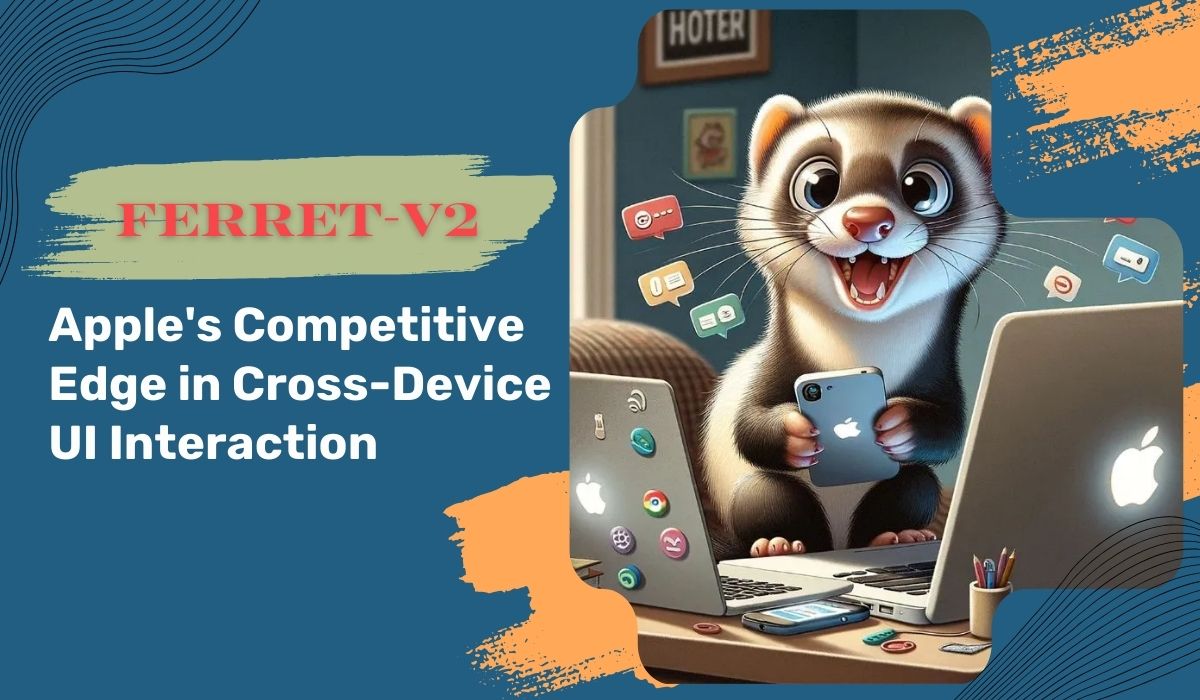
Apple has announced the launch of Ferret-v2, a breakthrough AI model designed to improve user interface (UI) interaction across multiple platforms, marking a significant step forward in the world of cross-device user experience. An upgrade from its predecessor, Ferret, the new model integrates three core innovations: high-resolution grounding for precise visual comprehension, multi-granularity encoding for a richer context understanding, and a unique three-stage training paradigm focused on aligning high-resolution images. Together, these advancements make Ferret-v2 one of the most advanced multimodal large language models (MLLMs), with performance metrics that surpass its competitors.
Embedded seamlessly within Apple’s ecosystem, Ferret-v2 enables cross-platform operation, including on iPhones, iPads, Android devices, web browsers, and even Apple TV, underscoring Apple’s commitment to adaptive AI in consumer technology. With its exceptional accuracy in UI element recognition, Apple hopes Ferret-v2 will push the limits of user interaction and accessibility, paving the way for the next generation of intelligent applications that work across devices.One of Ferret-v2’s standout features is its “any resolution” grounding capability, allowing it to interpret high-resolution images with exceptional detail, making it adaptable to a variety of screen types.
Another key enhancement is its multi-granularity encoding, which, with the power of DINOv2 as an encoder, enables the AI to process both broad and detailed visual information, improving its ability to understand user intent. Demonstrating its prowess in cross-platform usability, Ferret-v2 achieved impressive UI recognition scores, boasting 68% accuracy on iPads and 71% on Android devices, setting a new standard in cross-platform UI interaction. The model’s adaptability may extend beyond its current functionality, as Apple’s CAMPHOR framework could soon enable integration with Siri. This evolution would allow Siri to execute complex tasks and navigate apps through voice commands, showcasing the model’s potential to elevate Apple’s virtual assistant into a more versatile AI tool.
Ferret-v2 signifies a major leap in Apple’s ambition to create AI that can adeptly manage complex UI interactions. Unlike incremental updates, this model brings notable advancements in grounding, encoding, and training, offering precision in interpreting visual cues, particularly on mobile interfaces. The multi-granularity visual encoding, driven by DINOv2, empowers Ferret-v2 to understand both fine-grained and broader visual aspects, enabling it to distinguish among various UI components like icons, text fields, and menus with greater clarity. This capability has allowed Ferret-v2 to surpass competitors, such as GPT-4V, in UI element recognition, attaining a remarkable score of 89.73 in related tests.
Ferret-v2’s cross-platform usability highlights Apple’s emphasis on adaptive architecture, enhancing its ability to process spatial relationships between UI elements rather than relying on fixed click coordinates. This marks a departure in Apple’s design philosophy, equipping Ferret-v2 to handle applications across various devices, including mobile phones, web browsers, and Apple TV. While transitioning between mobile devices and larger screens such as TVs or web interfaces posed minor challenges due to differing screen layouts, Apple views this as an area for further improvement.In the broader tech landscape, Apple’s release of Ferret-v2 positions it directly against rivals like Microsoft’s OmniParser and Anthropic’s Claude 3.5 Sonnet, both aiming for cross-device UI interaction. However, Ferret-v2’s context-driven approach, enhanced by advanced encoders and high-resolution processing, could provide a decisive advantage.
Ferret-v2’s potential impact extends to Siri, hinting at a future where Siri could undertake more complex tasks, working in tandem with specialized AI agents and autonomously navigating apps and web pages through natural language commands. The model’s detailed spatial awareness also holds promise for accessibility improvements. Initially designed to support the visually impaired through screen summarization, Ferret-v2’s capabilities could contribute to creating a fully adaptable, voice-controlled environment, transforming user interactions across Apple’s ecosystem.As Apple continues to enhance Ferret-v2’s capabilities, the model’s potential to revolutionize user interactions from seamless navigation to advanced automation—signals a promising future for cross-platform UI integration and further solidifies Apple’s role as a leader in consumer-focused AI innovation.